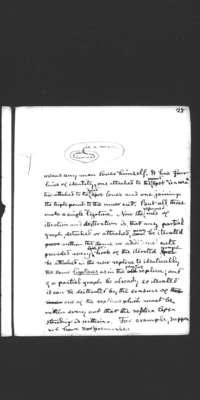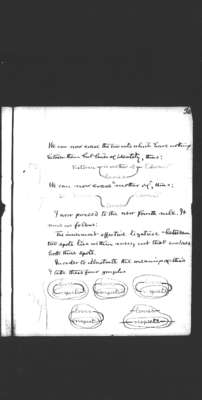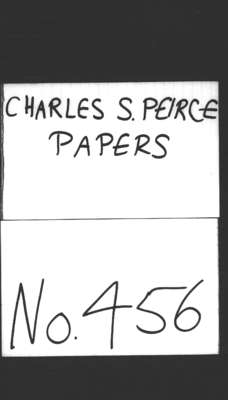Pages
36
28
means any man loves himself. It has four lines of identity, one attached to the monad spot “is a man” two attached to the dyad spot loves and one joining the triple point to the inner cut. But all those make a single “ligature.” Now the reformed rule of iteration and deiteration is, that any partial graph, detached or attached, may be iterated within the same or additional cuts provided every line or hook of the iterated spot graph be attached in the new replica to identically the same ligatures as in the old primitive replica; and if a partial graph be already so iterated it can be deiterated by the erasure of one of the replicas which must be within every cut that the replica left standing is within. For example, suppose we have [these?] premisses
38
30
We can now erase the two cuts which have nothing between them but lines of identity, thus:
We can now erase “mother of,” thus
I now proceed to the new fourth rule. It runs as follows:
The innermost effective ligature between two spots lies within every cut that encloses both those spots.
In order to illustrate the meaning of this I take these [five] graphs
39
27 31
The first three of these mean, respectively, “Nobody loves anybody whom he does not respect,” “Somebody loves nobody whom he does not respect,” “Somebody is loved by nobody who does not respect him.” Those three propositions cannot be expressed, with the same degree of analysis without the ligature the innermost of which is within the cut that encloses both spots. But the fourth, which means “There is somebody whom somebody does not love unless he respects him” will not have its meaning changed by breaking both ligatures, as in the fifth graph, so as to make it read “Either there is somebody who non-loves somebody or else somebody respects somebody” or “If everybody loves everybody somebody respects somebody.[”] The juncture protruding through two cuts could be cut without altering the meaning
By putting two cuts round the “loves” and retracting the [junctures?] through two cuts we get the equivalent graph
The third chapter of the exposition of existential graphs is by far the most important and interesting of the three. The whole gist of mathematical reasoning depends upon it. I shall have to remit it to another




